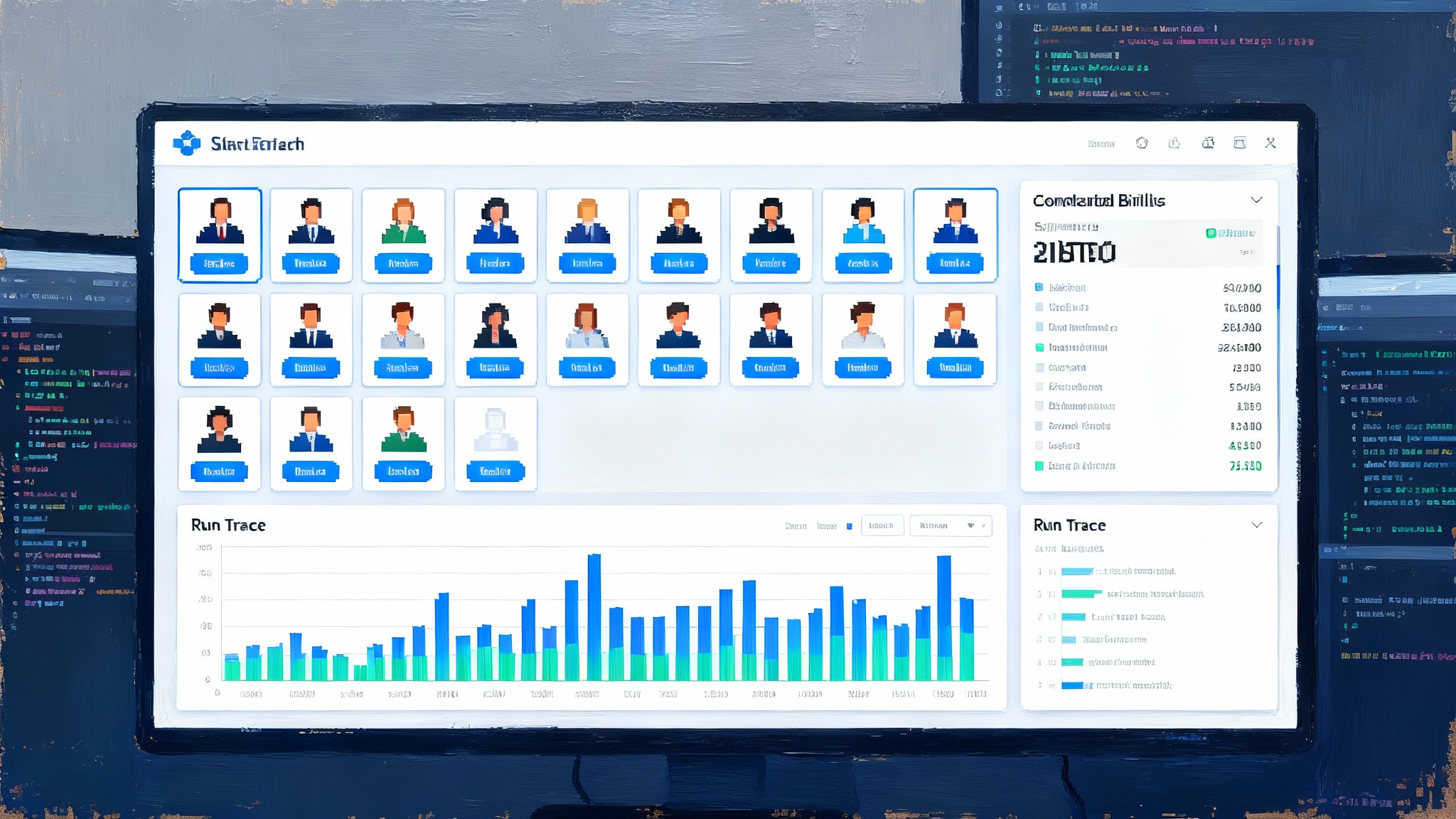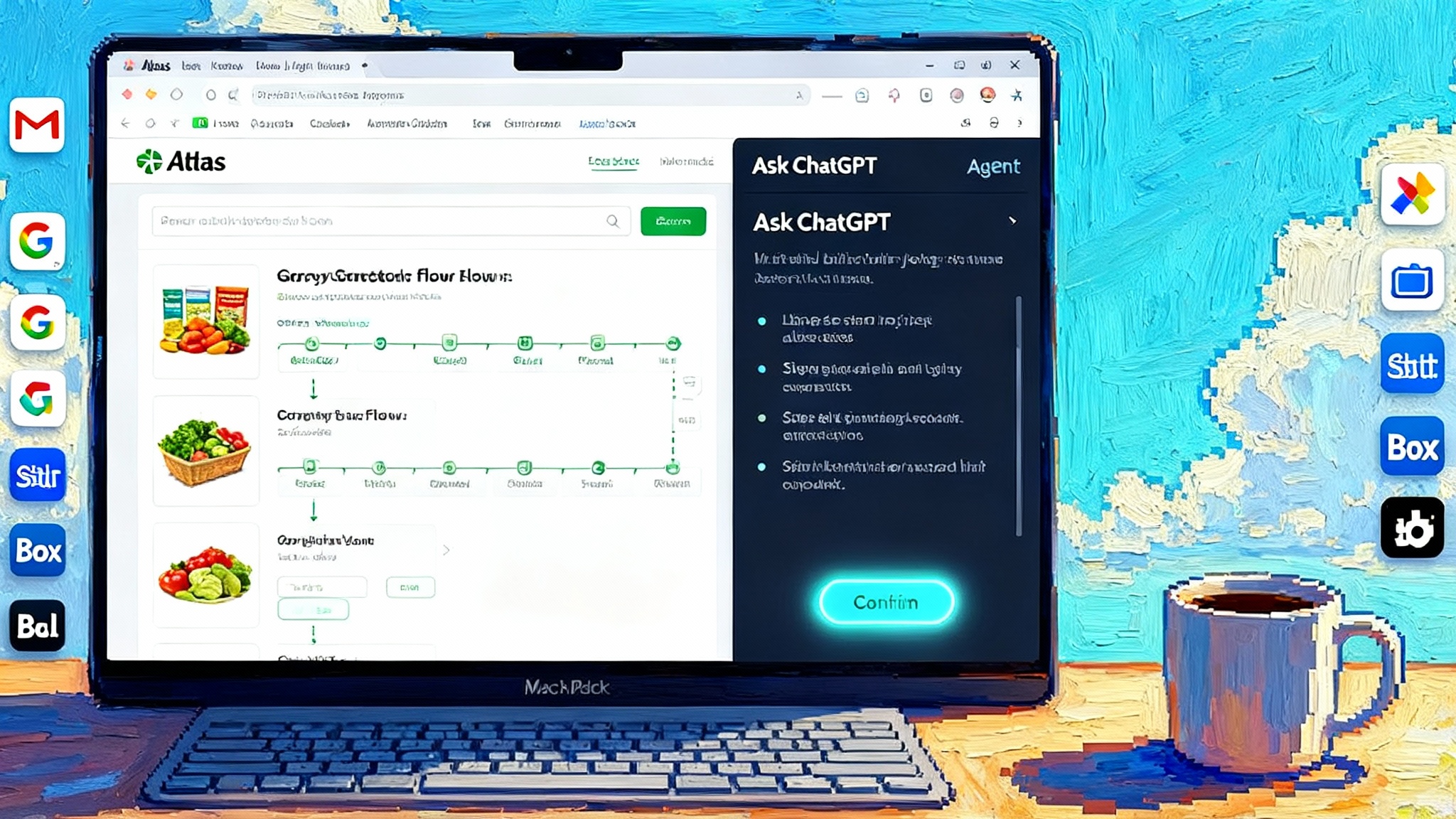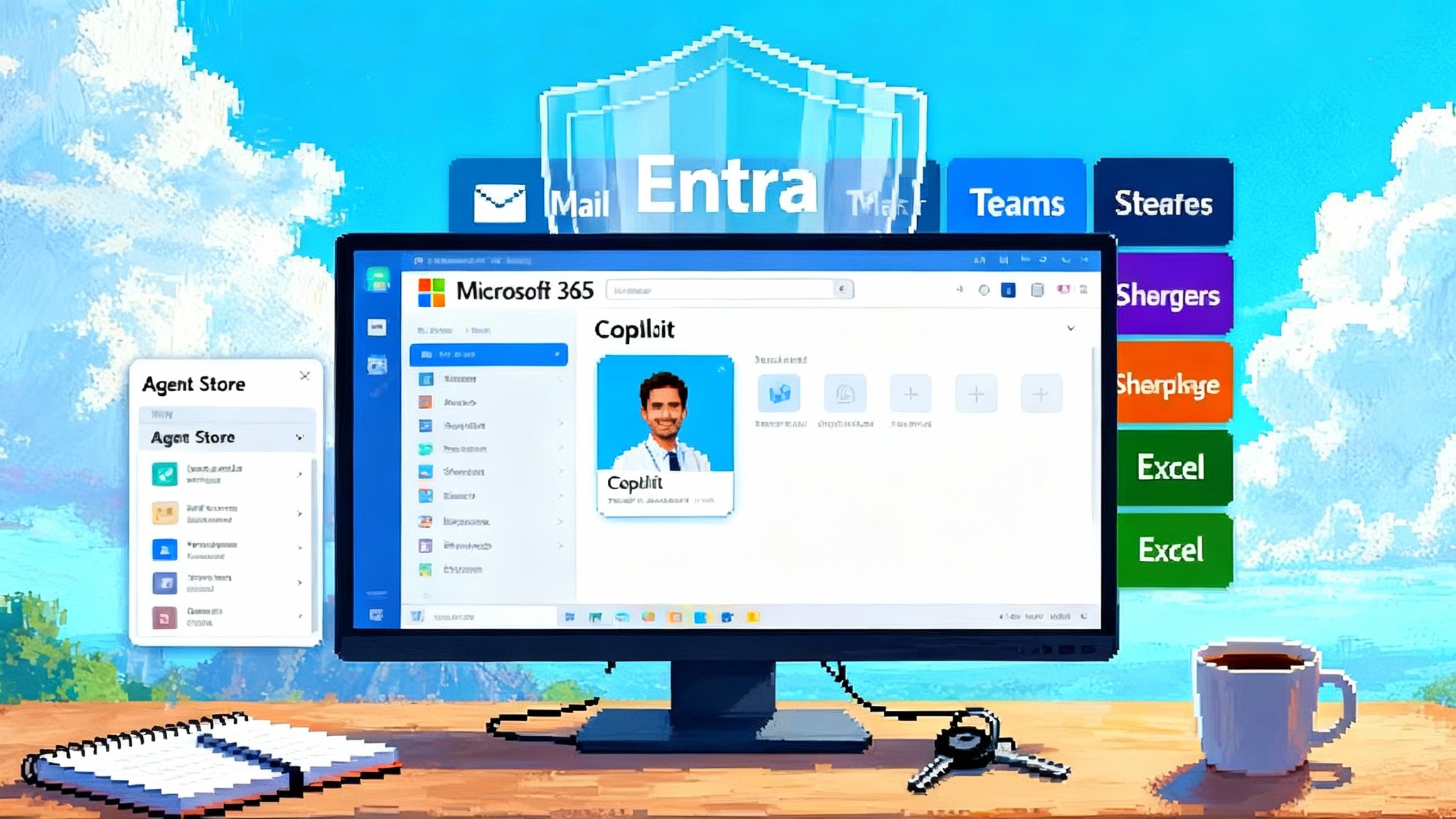Vercel Marketplace aims to be the npm for production agents
Vercel’s Marketplace and AI SDK 6 treat agents and key services as installable building blocks with unified billing, observability, and versioned updates. See how this model shortens the path from proof to production for real teams.

The breakthrough: agents you can install like packages
On October 23, 2025, Vercel introduced a new Marketplace category that treats AI agents and the services behind them as installable building blocks. With one click, a team can add an off the shelf agent or the infrastructure that powers custom agents, wire up authentication, and pay through a single bill. It looks like a small interface change, yet it sends a clear strategic message: agents are becoming a first class component in modern software. You can read the company’s framing in Vercel's agents and services announcement.
At the same event window, Vercel released AI SDK 6 and emphasized an agent first development model. Instead of scattering prompts and function calls across routes and components, the SDK encourages defining a reusable agent that can plan, call tools, and return structured results. The Marketplace plus AI SDK 6 combination behaves like a distribution layer for agents, similar to how package managers distribute code libraries. Vercel recapped the shift toward this architecture in AI SDK 6 agent-first architecture.
Why this matters now
If you have tried to wire three different agent related vendors into one product, you know the pain points. Each tool wants a new account, new keys, separate metrics, and its own invoice. That overhead is fine for a side project. It does not survive contact with procurement, finance, and security in a real company.
By turning agents and agent infrastructure into installable integrations with unified billing, Vercel reduces the surface area of vendor sprawl. One platform login. One invoice that can be split by project or team. One place to disable access when a project sunsets. The result is a simpler path from idea to production without a gauntlet of bespoke adapters.
This is not just developer convenience. It shortens the path from proof of concept to production. A staff engineer or platform lead can set guardrails for cost, logging, and data control once, then allow product teams to add approved agents and services on demand. The Marketplace becomes a way to standardize how agentic capabilities enter the codebase and the business.
What an npm for agents looks like in practice
Think of a classic package manager. You search, you pick a well maintained library, you install, you pin versions, and you get updates. Now translate that mental model to intelligent components:
- Discovery: browse curated listings for code review agents, retrieval services, browser automation, observability, and evaluation frameworks.
- Installation: click Install to inject credentials and configuration into your project with sensible defaults.
- Versioning and updates: choose when to update an integration, roll back if needed, and track what changed.
- Observability by default: logs, traces, and usage metrics come attached to each integration rather than bolted on after the fact.
Launch partners point at real workloads, not demo toy problems. Code review from CodeRabbit and Sourcery. Security signal triage from Corridor. Evaluation and monitoring from Braintrust. Retrieval from Mixedbread. A cloud browser from Kernel for automation heavy agents. Workflow orchestration from Kubiks. Analytics for conversational agents from Chatbase. Natural language browsing with Browser Use. Identity from Descope for users, partners, and even agents. These are the kinds of components teams need to get an agent to do useful work day after day.
The agent as a unit of reuse in AI SDK 6
Vercel’s AI SDK 6 pushes an agent first architecture. The idea is simple. Define an agent once with its tools and policies. Reuse it across your product lines. That reframes agents from fragile glue code into a portable unit you can treat like any other dependency. Keeping an agent’s behavior, tools, and limits in one place reduces drift and copy paste errors.
In practice, this means an organization can define a Purchase Order Triage Agent with tool access to a document store, an approvals service, and a messaging bus. The same agent can then be:
- Exposed in a customer support interface for self service triage
- Invoked in a back office workflow when a new invoice arrives
- Used by an internal chatbot in Slack for quick lookups
The SDK provides primitives for multi step reasoning, tool calling, and structured responses. The Marketplace adds plug and play building blocks to compose those agents. Together they let teams design once and deploy many times, which is how you get repeatability and scale.
Unified billing is more than convenience
Procurement cares about total cost, cost allocation, and contract risk. Developers care about speed and simplicity. Finance cares about predictability and chargebacks. Unified billing sits at the intersection of all three.
- Single invoice, many providers: one invoice breaks down usage by provider and project. That makes chargebacks straightforward and reduces reconciliation work at month end.
- Faster vendor intake: once a provider is approved for the Marketplace, subsequent teams can install it without repeating legal and security review from scratch.
- Budget controls: set project level caps and alerts so long running agents do not quietly overspend on a weekend.
When billing is integrated into the place where you deploy and observe, it becomes a control plane for cost that developers will actually use. That is a practical path to guardrails without slowing teams down.
Observability built into the platform
Agents fail in specific, frustrating ways. They call the wrong tool. They lose context over long runs. They take too many steps. They behave fine in staging and stall in production. Without good telemetry you are guessing.
Baking observability into Marketplace integrations and the platform changes this. Teams can:
- Trace agent runs across tools with timestamps and arguments
- Correlate spikes in cost with specific prompts, tools, or model versions
- Capture and sample transcripts for evaluation and regression testing
- Attach evaluation frameworks like Braintrust to turn logs into quality scores
The important change is not that logs exist. It is that logs, traces, and evaluation are first class aspects of each installable integration, so they show up where developers already look. This reduces the time from a vague complaint like it seems slower today to a concrete fix like the retrieval tool added two seconds after we changed the embedding model.
Plug and play integrations change the ops playbook
Production grade agents need more than a clever prompt. They need controlled access to data, reliable tools, predictable cost, and a way to roll back. A Marketplace filled with vetted, pluggable components nudges teams to adopt operational patterns that are common in traditional software but rare in early agent projects:
- Shadow mode first: connect an agent to read only data and run it silently next to the human workflow. Compare outcomes before you put it in front of customers.
- Progressive privilege: start with narrow, low risk tools and widen access as evaluation scores improve.
- Canary and rollback: version your agent definition and promote releases the same way you promote code, with easy reversal if quality dips.
- Error budgets for autonomy: define a target quality score and a maximum step count. If the agent’s measured quality or step count drifts, automatically reduce autonomy or route to a human.
Because installation is standardized and metadata is consistent, you are not shelling out to a random script each time you add a capability. You make routine, reversible changes rather than fragile one off hacks.
How this accelerates enterprise adoption
Enterprises say yes when three things are true: risk is understood, cost is predictable, and the path to value is short. The Marketplace approach helps on all three:
- Risk: listings can document data handling, regions, and certifications. Integrations ship with a minimal permission model. Audit logs are centralized.
- Cost: unified billing and project level budgets cap surprises. Finance can attribute spend to the teams that benefit from it.
- Time to value: one click installation reduces the weeks normally wasted on credentials, dashboards, and bespoke adapters.
This lowers the activation energy to pilot an agent in one department, measure impact, and expand. Crucially, teams do not need to change their core cloud or enterprise resource planning control planes to try it. The Marketplace sits at the application layer where teams already deploy their front ends and APIs.
Where this fits in the broader ecosystem
Vercel’s move is one expression of a larger shift. Cloud networks, application platforms, and data layers are all racing to become credible distribution channels for agentic systems. If you have followed how others are standardizing deployment and control, you will see the through line:
- Cloud and edge providers are making it easier to run tools close to users while keeping costs visible. For a look at the edge side, see Cloudflare's edge for MCP agents.
- Platform vendors are packaging opinionated workflows so teams can ship stable agents faster. Compare the themes here with Google's Agent Builder lessons.
- Data platforms are turning retrieval and governance into reusable bricks you can slot into agent workflows. If the lakehouse is your center of gravity, read Agent Bricks for lakehouse agents.
These threads converge on the same outcome: agents are becoming manageable, observable, and purchasable parts of a modern stack.
Monetization will evolve beyond seats and tokens
Selling agents through a marketplace invites flexible business models:
- Pay per action: charge per validated action, like a triaged ticket or a resolved alert, rather than raw tokens.
- Outcome guarantees: offer credits or refunds if evaluation metrics fall below a threshold for a period.
- Bundled capability packs: group common tools like retrieval, browser control, and analytics at a flat monthly rate for predictable budgeting.
- Tiered observability: include basic logs, and price premium traces and evaluation at higher tiers.
For vendors, the Marketplace provides access to an audience that already runs on the platform. For buyers, it reduces the friction to try and the cost to switch. That dynamic pushes competition toward quality and reliability rather than just price.
Concrete assemblies a team could ship fast
To make this less abstract, here are two realistic assemblies that a team could ship in a week once the fundamentals are in place:
- Autonomous code hygiene: install a code review agent like CodeRabbit and an analytics service like Chatbase. Configure the agent to comment on pull requests focused on formatting and minor refactors. Track comment acceptance rate and regression bugs. If acceptance falls below a target, route to human review. This scope is thin but useful.
- Retrieval enhanced investigation bot: combine Mixedbread for retrieval, Kernel’s cloud browser for live data, and an evaluation framework from Braintrust. Put the agent into shadow mode on your on call channel. If it returns the correct runbook link three nights in a row with high evaluation scores, allow it to post suggestions directly.
Both examples show how plug and play components tighten the loop from idea to measurable impact.
What could still slow things down
No platform move is a silver bullet. Teams should watch for a few friction points and plan accordingly:
- Lock in through convenience: the easier installation gets, the easier it is to forget about portability. Mitigate by keeping agent definitions and policies in version control and building to open tool calling patterns where possible.
- Hidden blast radius: agents can call tools that call other tools. Treat tool graphs like dependency graphs and set maximum step counts and budgets.
- Quality drift in production: maintain a standing evaluation suite that runs nightly on production transcripts and blocks promotions if scores drop.
- Siloed governance: if cost caps and audit trails live only in one platform, programmatic guardrails may be ignored elsewhere. Mirror essential controls in your central governance tooling.
The good news is that the same distribution layer that creates convenience can also enforce discipline when teams use the controls.
A practical starting plan for platform teams
If you run a platform team, here is a concrete path that earns trust quickly:
- Pick one narrow, measurable workflow. Think overdue invoice reminders, low risk security alerts, or internal documentation enrichment.
- Start with Marketplace listings already approved by your security team. Aim for the smallest set of vendors that gets you to value.
- Define quality and cost targets up front. For example, an acceptance rate of 80 percent, median latency under two seconds, and a monthly cost cap.
- Run in shadow mode for one week, then promote behind a feature flag. Tie promotion to evaluation scores rather than gut feel.
- Document the rollback plan. Make it trivial so engineers do not hesitate to use it.
- Socialize results in weekly demos with both metrics and transcripts. Turn wins into templates other teams can reuse.
This path is repeatable. It builds confidence with stakeholders and creates a blueprint that other teams can adopt with minimal friction.
The bigger picture
Every major platform shift needs a distribution layer. For web applications it was package managers. For mobile it was app stores. For agents, that job is still open. Vercel’s Marketplace category and AI SDK 6 push make a credible case that installable agents with unified billing and observability can fill that role.
The details will change. Listings will mature. Pricing models will stabilize. Evaluation methods will get sharper. But the direction is clear. Agents are moving from one off experiments to installable components that teams can operate with the same discipline they apply to any other production system. That is a practical path off the demo stage and into the daily fabric of work.
Closing thought
If you want to know whether this matters, watch how many teams go from idea to a guarded, measurable agent in production in under two weeks. If that number rises, distribution has found product market fit. The Marketplace is not the whole story of agents, but it may be the missing chapter that turns promise into practice.








